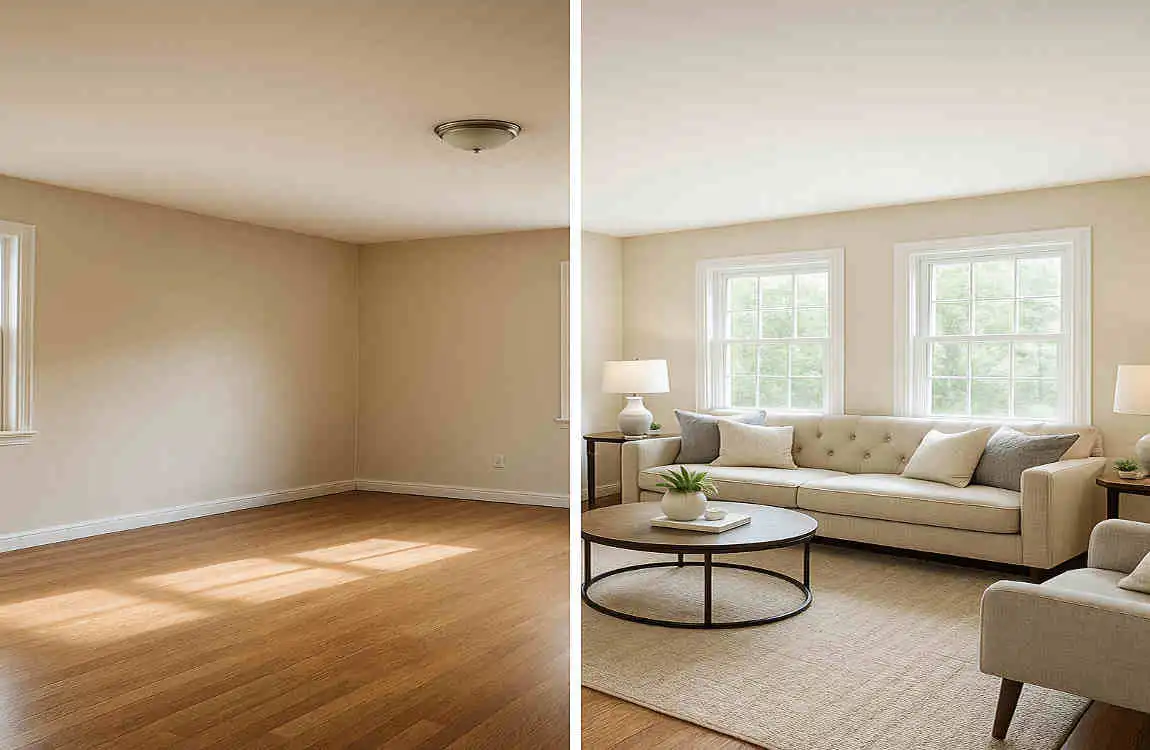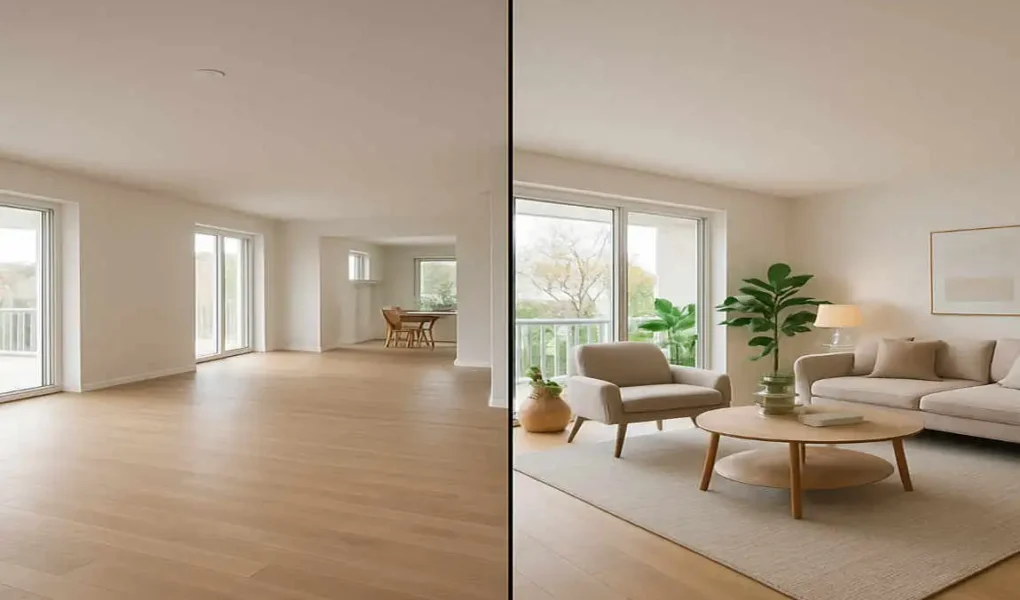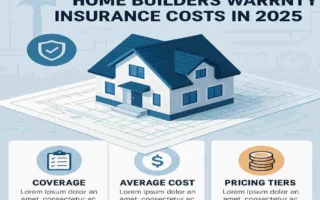Selling a house is a big deal, and the way you present your property can make all the difference. Should you sell it empty, allowing buyers to imagine their own furnishings? Or would it be better to sell it furnished, showcasing the home’s potential and lifestyle? These are the questions that many sellers grapple with, especially in the ever-evolving 2025 real estate market.
Understanding the Real Estate Market in 2025

Before we dive into the pros and cons of selling empty or furnished, let’s take a moment to understand the current state of the real estate market in 2025.
Trends Influencing Home Sales in 2025
The real estate landscape is constantly evolving, and 2025 is no exception. Some of the key trends influencing home sales this year include:
- A growing emphasis on sustainability and energy efficiency
- Increased demand for home offices and flexible living spaces
- A shift towards virtual tours and digital marketing
- Rising interest rates and their impact on buyer affordability
Buyer Preferences: Empty Homes vs Furnished Homes
When it comes to buyer preferences, the choice between empty and furnished homes can vary depending on the individual. Some buyers prefer the blank canvas of an empty house, allowing them to envision their own furnishings and personal style. Others appreciate the immediate appeal and lifestyle inspiration provided by a furnished property.
How Market Dynamics Affect the Decision
The decision to sell your house empty or furnished can be influenced by various market dynamics, such as:
- The overall supply and demand in your local area
- The average time homes spend on the market
- The target demographic of potential buyers
- The current economic climate and its impact on buyer behavior
By understanding these market factors, you can make a more informed decision about whether to sell your house empty or furnished in 2025.
Advantages of Selling a House Furnished
Now, let’s explore the benefits of selling your house furnished in the 2025 real estate market.
Immediate Visual Appeal for Buyers
One of the most significant advantages of selling a house furnished is the immediate visual appeal it offers to potential buyers. When they walk through a fully furnished home, they can instantly see the potential and imagine themselves living in the space.
Setting Lifestyle Expectations
A furnished home can also help set lifestyle expectations for buyers. By showcasing how the space can be used and styled, you’re giving them a glimpse into the kind of life they could lead in your home. This can be particularly appealing to buyers seeking a turnkey solution.
Easier for Buyers to Imagine Living in the Space
When a home is furnished, it’s much easier for buyers to visualize themselves living there. They can see how their own furniture might fit in the space and gain a better sense of the room’s size and layout. This can make the home feel more inviting and increase the chances of a successful sale.
Can Justify a Higher Asking Price
If your home is furnished with high-quality, stylish pieces, you can justify a higher asking price. Buyers are often willing to pay more for a home that feels move-in ready and comes with attractive furnishings.
Faster Sales Cycle Due to Emotional Connection
Finally, selling a house furnished can lead to a faster sales cycle. When buyers feel an emotional connection to a home, they’re more likely to make an offer quickly. The right furnishings can help create that connection and speed up the selling process.
Disadvantages of Selling a House Furnished

While there are many advantages to selling a house furnished, there are also some potential drawbacks to consider.
Depersonalization Challenges
One of the main challenges of selling a furnished home is depersonalization. Your furnishings and decor may not align with the buyer’s personal style, which could be a turn-off. It’s essential to strike a balance between showcasing the home’s potential and maintaining a neutral aesthetic that appeals to a broad range of buyers.
Risk of Furnishings Looking Dated or Worn Out
Another risk of selling a house furnished is that your furnishings may look dated or worn out to potential buyers. If your furniture is old or in excellent, poor, or poor condition, it can negatively impact the perceived value of your home. In this case, it may be better to sell the house empty and let the buyers bring in their own furnishings.
Extra Effort and Costs Related to Moving or Maintaining Furniture
Selling a furnished home can also require additional effort and expenses. You’ll need to decide whether to move your furniture out before the sale or leave it in place for showings. If you choose to leave it, you’ll need to maintain and stage the furniture throughout the selling process, which can be time-consuming and expensive.
Buyers Potentially Distracted from Home’s Features
Finally, there’s a risk that buyers may become distracted by the furnishings and overlook the home’s key features. If the furniture is too prominent or clashes with the home’s architecture, it can detract from the property’s overall appeal. In this case, selling the house empty may be a better option.
Advantages of Selling a Empty House
Now, let’s explore the benefits of selling your house empty in the 2025 real estate market.
Allows Buyers to Visualize Their Own Furnishings and Personal Style
One of the primary advantages of selling an empty house is that it enables buyers to envision their own furnishings and personal style in the space. Without the distraction of existing furniture, they can more easily imagine how they would decorate and use the home.
Highlights the Home’s Structural Features and Space Better
An empty home also does a better job of highlighting its structural features and space. Without furniture blocking the view, buyers can more easily appreciate the home’s layout, room sizes, and architectural details. This can be particularly important for homes with unique or impressive features.
Flexibility for Buyer Inspections and Walkthroughs
Selling a house empty also provides more flexibility for buyer inspections and walkthroughs. Without furniture in the way, inspectors and appraisers can more easily access all areas of the home. This can help streamline the selling process and avoid any potential issues or delays.
Fewer Distractions, Clear Focus on Property Condition
Finally, an empty home has fewer distractions, allowing buyers to focus clearly on the property’s condition. They can more easily spot any issues or areas that need attention, which can help them make a more informed decision about the home’s value and their offer price.
Disadvantages of Selling a House Empty
While there are many advantages to selling a house empty, there are also some potential drawbacks to consider.
Harder for Buyers to Gauge Room Sizes and Potential Uses
One of the main challenges of selling an empty home is that it can be harder for buyers to gauge room sizes and potential uses. Without furniture to provide scale and context, rooms may appear larger or smaller than they actually are. This can make it more difficult for buyers to envision how they would use the space.
Empty Rooms Can Feel Cold, Uninviting, or Smaller Than Furnished
Empty rooms can also feel cold, uninviting, or even smaller than they would if furnished. Without the warmth and character that furniture and decor bring, a home may appear less appealing to potential buyers. This can be particularly true for homes with large, open spaces.
Longer Time on Market if Buyers Struggle to Imagine Living There
If buyers struggle to imagine themselves living in an empty home, it may spend more time on the market. Without the visual cues and inspiration provided by furnishings, they may struggle to connect with the property and make an offer. This can result in a longer and more stressful sales process.
Possible Lower Perceived Value Without Staging
Finally, an empty home may have a lower perceived value if it’s not staged correctly. Without the right furnishings and decor to showcase its potential, buyers may underestimate the home’s worth and offer less than you’re hoping for. This is why it’s often recommended to invest in professional staging, even for empty homes.
Expert Tips for Selling in 2025
Now that we’ve explored the pros and cons of selling a house empty versus furnished, let’s dive into some expert tips for selling in the 2025 real estate market.
When to Choose Furnished Over Empty Based on Property Type and Location
The decision to sell your house furnished or unfurnished can depend on factors such as the property type and location. For example, if you’re selling a vacation home or rental property, furnishing it may be more appealing to buyers looking for a turnkey solution. On the other hand, if you’re selling a high-end luxury home in a competitive market, selling it empty may allow buyers to better appreciate its architectural features and potential.
Hybrid Staging Options: Virtual Staging and Minimal Furniture
In 2025, hybrid staging options, including virtual staging and minimal furniture, are gaining popularity. Virtual staging allows you to showcase different furnishing styles and layouts without the cost and hassle of physical furniture. Minimal furniture, on the other hand, involves using just a few key pieces to highlight the home’s best features while still leaving room for buyers to imagine their own furnishings.
Decluttering and Neutral Décor Advice for Sellers
Regardless of whether you choose to sell your house empty or furnished, decluttering and using neutral decor are essential for a successful sale. Remove any personal items, excess furniture, and clutter to make the home feel more spacious and inviting. Stick to a neutral color palette and avoid bold or trendy decor that may not appeal to all buyers.
Partnering with Professional Stagers or Real Estate Agents
Working with a professional stager or real estate agent can be a game-changer when it comes to selling your home in 2025. These experts possess the knowledge and experience to help you make informed decisions about staging, pricing, and marketing your property. They can also provide valuable insights into the local market and buyer preferences.
Insight into How COVID-19 Shifts or Economic Factors May Impact Preferences
Ultimately, it’s crucial to consider how shifts related to COVID-19 or economic factors may influence buyer preferences in 2025. For example, if remote work remains popular, buyers may prioritize homes with dedicated office spaces. If the economy is strong, buyers may be more willing to invest in fully furnished properties. Staying attuned to these factors can help you make the best decision for your home sale.
Additional Considerations
In addition to the pros and cons and expert tips we’ve discussed, there are a few more factors to consider when deciding whether to sell your house empty or furnished in 2025.
Impact of Target Buyer Demographics on Decision
The demographics of your target buyers can significantly influence your decision. For example, if you’re targeting young professionals or first-time homebuyers, a furnished home may be more appealing as a turnkey solution. On the other hand, if you’re targeting empty nesters or retirees, they may prefer the flexibility of a home with an empty nest.
Legal and Insurance Factors for Selling Furnished Homes
Selling a furnished home involves several legal and insurance considerations. You’ll need to ensure that any furniture or appliances included in the sale are in good condition and meet safety standards. You may also need to adjust your insurance coverage to account for the additional value of the furnishings.
Financing and Appraisal Implications
The decision to sell your house empty or furnished can also impact financing and appraisal. If you’re selling a furnished property, the appraiser will need to consider the value of the furnishings in their assessment. This could increase the home’s appraised value, but it may also make it more difficult for buyers to secure financing.
Regional Variations in Market Preferences
Ultimately, it’s essential to consider regional variations in market preferences when determining whether to sell your house empty or furnished. In some areas, furnished homes may be more common and desirable, while in others, empty homes may be the norm. Researching the local market and working with a knowledgeable real estate agent can help you make the best decision for your specific location.




